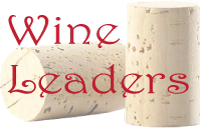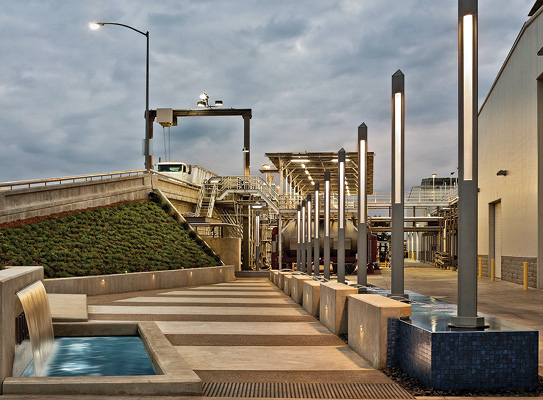- Home
- Media Kit
- Current Issue
- Past Issues
- Ad Specs-Submission
- Ad Print Settings
- Reprints (PDF)
- Photo Specifications (PDF)
- Contact Us


![]()
ONLINE

Building for
the Next Generation
Editors’ Note
During the 1870s, Johann and Maria Lange settled in Lodi, California and began a family farm growing nonirrigated watermelons with their son, Albert. The acreage grew year over year, and by 1916, they had their family’s first vineyard. It was on this ranch where Albert’s son, Harold, was born in 1920. Albert and Harold’s ranch expanded to include the River and the DeVries Road Ranches. They continued the tradition of working the vineyards and, in 1974, they decided to farm on their own. Harold had twin sons, Randall and Bradford, who continued the farming tradition, but broke away in 1974 to form their own ‘LangeTwins’ partnership. As the youngest generation grew up on the River Ranch, they developed an appreciation for winegrowing by working summers and at harvest time. After college, they each decided to return to the family farm, and a winery was built in 2006 to vertically integrate and expand the operation utilizing the talents of the ‘new kids.’
Winery & Vineyards Brief
For five generations, the LangeTwins Family Winery & Vineyards (langetwins.com) has been growing sustainable wine grapes in the Lodi appellation. In 2006, they opened a winery to showcase their passion for growing wine grapes. Building on their successes as a vineyard management company, the winery was their first step into crafting wines made solely from their estate vineyards. Since opening, they have continued to expand their state-of-the-art winery to keep up with the demand for LangeTwins wines, as well as private labels and custom winemaking services.
Would you talk about the history of this brand and how it has evolved over the years?
After we finished college in 1972, my identical twin brother Brad and I came back to our family’s small business and went to work with my dad and older brother. A year or so later, we had other avenues to take, and Brad and I started our business called LangeTwins.
LangeTwins started off with four – my brother and our wives – and I give full credit to the ladies because when we started our business, we did two things: We started a management company that managed absentee property owners’ properties and vineyards, and we put our ladies to work on the farm. We established LangeTwins management company based on the ladies being able to make the family income.
For those who are interested in owning land in the Lodi area and putting a vineyard on it, we are still a turnkey operation. We plant the vineyards, secure the contracts for the grapes, and make sure we have places to take those grapes. We farm it from beginning to end.

LangeTwins Family Winery in Acampo, California
If you were to do that as a property owner, you take risk, which is predominantly dealing with Mother Nature, but there’s market risk too. If in the spring you get a cold frost that takes the crop, it still takes the same amount of investment whether you make a profit or not.
What the management business does is make it possible for us to take the risk out of our own farming. We bought 120 acres from my dad, so if it frosted and took our crop, we suffered, because it took our year’s income. However, with the management company, a check came in every month regardless.
In that period of time, there were five kids born – my wife and I have three children, and my brother and his wife have two children. So by 2006, we were a nine-member family. Also, by then, Bob Mondavi had come back to Lodi and started what we called in those days “Bob Red” and “Bob White” at Woodbridge. Over a few years, that progressed to Woodbridge by Robert Mondavi and, by 2005, it had grown to a seven- or eight-million case program.
We became a preferred viticulture company for the Mondavi group. When they wanted vineyards to be planted, we had the ability to say that we have the land, we can plant the vineyards, and we can grow those grapes to your quality standards.
By doing our jobs and doing them well, we were able to secure contracts when no one else could. By early 2006, we were responsible for about 35 percent of the Mondavi Woodbridge program.
Today, we farm over 8,000 acres of vineyard and harvest about 60,000 tons a year, depending on Mother Nature. We’re a major viticulture company and we expanded our ownership from the original 120 acres to about 1,600 acres of vineyard over the past 35 years.
Is the business today more about the management or the wine?
It’s still about management, but it has changed a bit. We built our ownership of vineyard land by managing other people’s properties, charging them a fee, taking the profit of that business and buying land, and then developing our own vineyards.
In 2005, we decided to build the winery. Our kids said they wanted to take it to the next level and develop a winery, so they came to the family advisory council with a basic outline of how they wanted to approach it. We felt we needed to build this for the next generation.
When I talk about generations, I’m talking about sixth, seventh, and eight, and even ninth and tenth. We felt that in order for the Lange generations to be able to sit down and remain an agricultural-based company, we had to find ways to add value to the farm gate. We had to find a way of not remaining a per-ton grower – in other words, sign a contract with a winemaker, sell it to them by the ton, and that’s the end of it. This makes it a commodity and we had to add a specialty to what we did.
I focused on building the winery, but it’s built on that same business model – we do custom wine management for a lot of different people, and that takes the risk out of our ownership of the winery. We’re slowly building our processing and our wine-making through our own winery, and as our programs grow, we will take less of the wine management business.
The winery is a large one. We harvested 26,000 tons of grapes last year and processed 15 different varietals. We make around 4.4 million gallons of wine a year, of which 14 percent is sold as case goods. The rest is shipped for our custom crush clients, or sold as bulk wines, leaving the winery in 6,500 gallon tankers. We sell by sample, and most of our business goes to Napa and Sonoma as a blender and extender to their programs.
It’s a much different business, because when you’re in the fruit business, you can’t say no at times. We can now say no, but also instead of disappearing in the background of other wineries, we’re able to stand in front of our own vineyards and wine-making. As long as we’re producing quality grapes and wine, we will continue to build a reputation of producing good wine.
We already have a good reputation of being good viticulture managers so we’re able to live or die on our own reputation.
We do business with a vast number of wineries in California. Our case-good program, what we have here in the bottle, is generational. The by-the-gallon sales, the custom wine-making, even the custom labels we do, pays the bills. This is the generational investment for our future.•